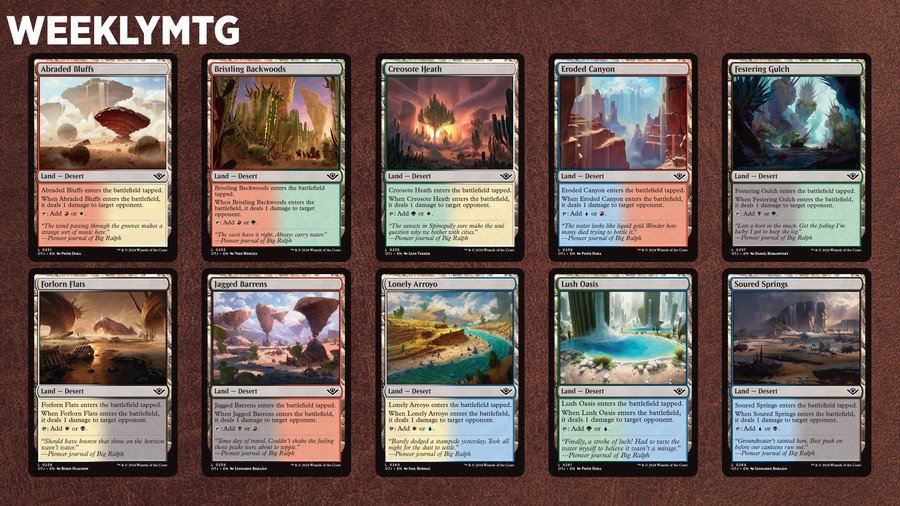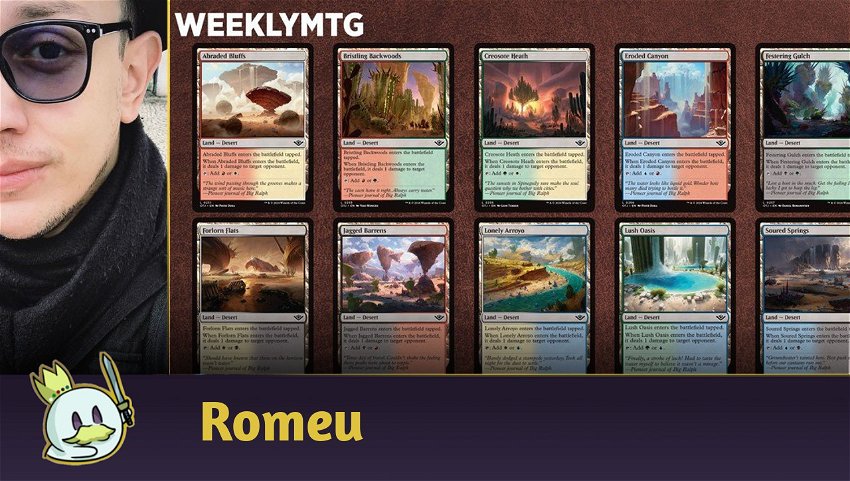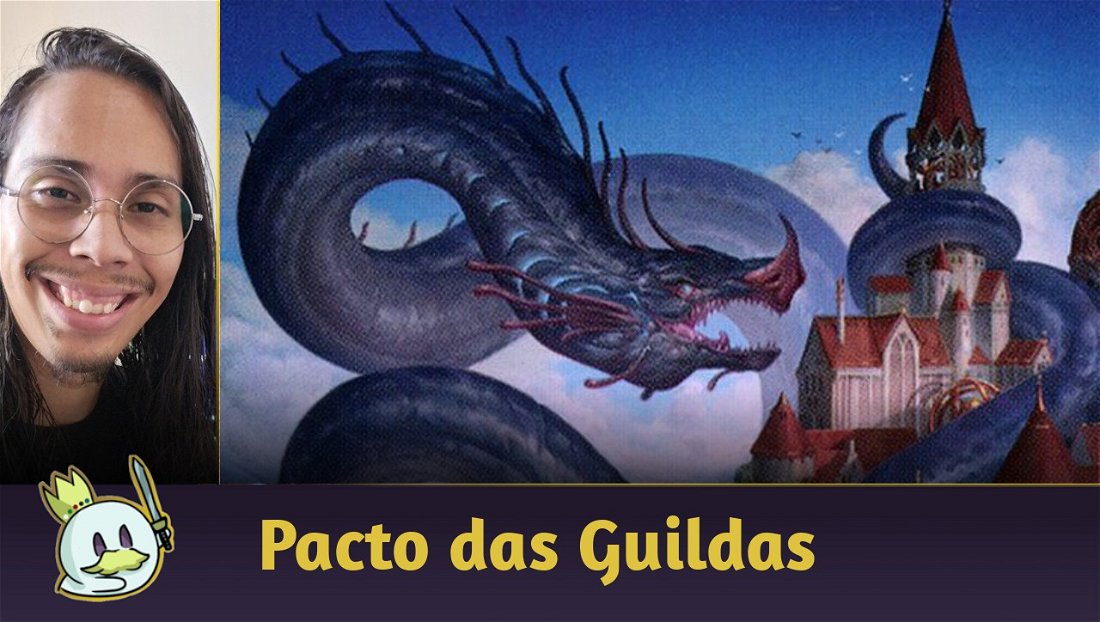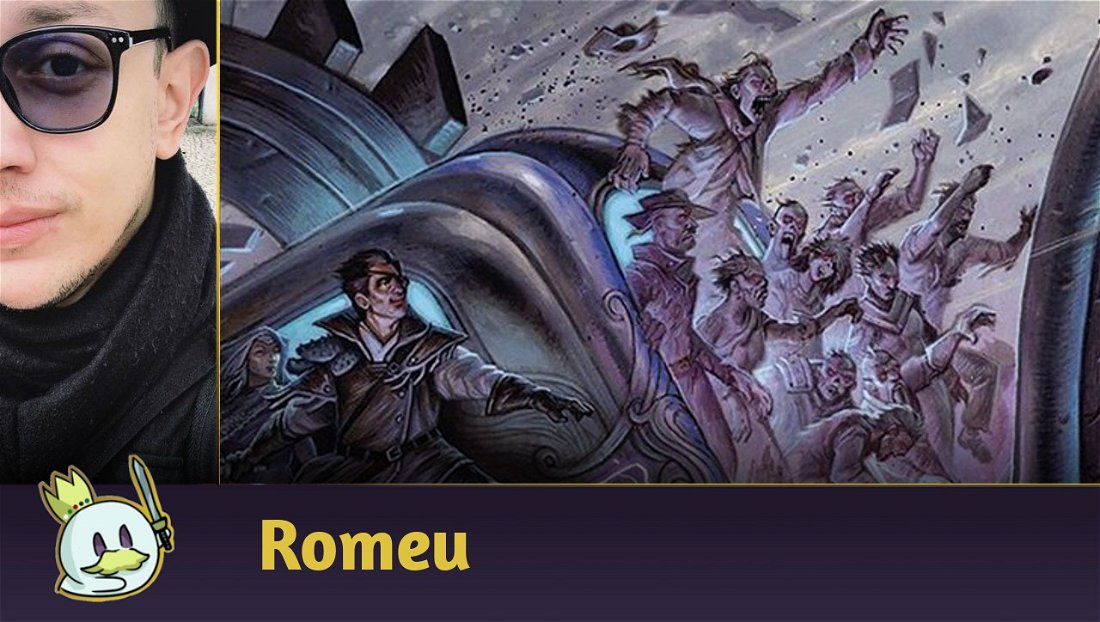The previews for Outlaws of Thunder Junction started last Tuesday, with news about new mechanics, variants and a gigantic plot twist in its lore, in addition to four distinct set symbols
, which has caused headaches for players to know what is legal in each format.
For Pauper, the first big new addition was found on its land cycle, with the Desert subtype and a triggered ability already seen in Sunscorched Desert.
Ad

The Desert Lands or Ping Lands are a big new feature for the format with some potential to affect the competitive Metagame, and in this article, we will evaluate their impact on Pauper and compare them with the Life Lands from Khans of Tarkir.
Desert Lands on Pauper

The Desert Lands may be the most important cycle Pauper has received since the Bridges in Modern Horizons II. While the format still lacks good interactions with its subtype - which could change with Outlaws of Thunder Junction - its ETB effect creates some useful interactions and identifies relatively well with the format's proposal today of betting on speed over resilience.

Its direct comparison is with Life Lands, known former staples which remained at the top of the Metagame for years until other cycles worked better under other circumstances - today, Life Lands are run mostly in the Boros Synthesizer, while other archetypes opt for other types due to their interactions with cards like Snuff Out or Lorien Revealed.

These places Desert Lands in a rather bad spot, at least until interactions with deserts that are viable for the current Pauper Metagame are revealed.
Which Decks might run Desert Lands?
Despite the clear disadvantage in “land types”, Desert Lands are useful for some specific strategies or where their damage makes a significant difference.
Rakdos Burn
Rakdos Burn is one of the main options for the new cycle, given its interaction with Skewer The Critics and Bounce Lands in an archetype whose objective is to deal the highest amount of damage possible in the shortest number of turns.
With Jagged Barrens, we can increase the amount of damage sources we have and still receive the “bonus” of running Skewer the Critics more consistently, although this seems a little too redundant when our list doesn't include Chain Lightning or Bump in the Night.
Boros Synthesizer
Boros Synthesizer is extremely adaptable to the Metagame in which it is inserted, migrating from more proactive or reactive stances as the best deck changes.
Today, Wind-Scarred Crag seems better positioned given the predominance of archetypes aiming to play “under”, but if changes occur in Pauper which require the deck to be more aggressive with, for example, an increase in Seeker of the Way, it is possible that the extra point of damage from Abraded Bluffs and its interaction with Kor Skyfisher compensate for the extra life, putting it in the spotlight in the Metagame.

Ad
Finally, the interactions between Ghostly Flicker with ETB lands like Tranquil Cove had its moments of glory in pre-Modern Horizons Pauper, and the addition of damage on a dual can bring new opportunities to Ghostly Flicker, including for possible arbitrary damage looping, although the pieces needed to do so require a huge amount of deckbuilding concessions.
Azorius Familiars may even have some interest in this cycle due to the possibility of speeding up your clock with them, given how often it has a hard time closing the game once the board is stabilized.
Conclusion
Desert Lands might be Pauper's most important duals cycle since the Bridges, but that doesn't make them a better option than other variants already existing in the current Metagame and leaves it in a rather bad spot.
In some scenarios or archetypes, it may see more play due to the demand to speed up the clock or the rise of strategies that care about its mechanics, but in the general scope, its current space is far too limited since it interacts badly with the major archetypes.
Thanks for reading!








— 评论0
成为第一个发表评论的人